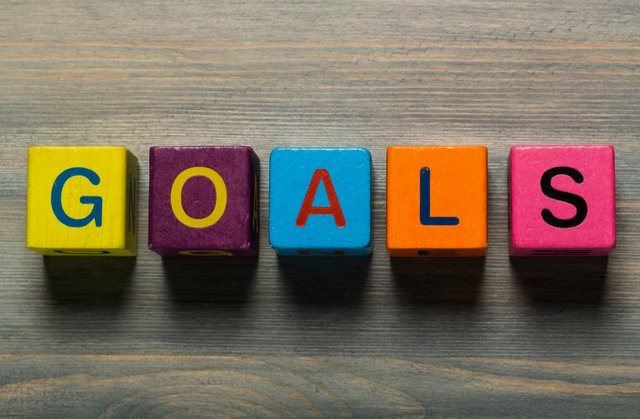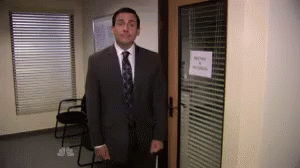As stated in my previous post, “The Process” consists of five distinct steps:
a) Have clear goals.
b) Identify and don’t tolerate the problems that stand in the way of achieving your goals.
c) Accurately diagnose these problems.
d) Design plans that explicitly lay out tasks that will get you around your problems and on to your goals.
e) Implement these plans—i.e., do these tasks.
In this post I will go into detail on how to set goals.

1) Setting Goals
You can have virtually anything you want, but you can’t have everything you want.
The first, most important, and typically most difficult step in the 5-Step Process is setting goals, because it forces you to decide what you really want and therefore what you can possibly get out of life. This is the step where you face the fundamental limit: life is like a giant smorgasbord of more delicious alternatives than you can ever hope to taste. So you have to reject having some things you want in order to get other things you want more.
Some people fail at this point, afraid to reject a good alternative for fear that the loss will deprive them of some essential ingredient to their personal happiness. As a result, they pursue too many goals at the same time, achieving few or none of them.
So it’s important to remember: it doesn’t really matter if some things are unavailable to you, because the selection of what IS available is so great. (That is why many people who had major losses—e.g., who lost their ability to walk, to see, etc.—and who didn’t narrow-mindedly obsess about their loss but rather open- mindedly accepted and enjoyed what remained, had equally happy lives as those who didn’t ever have these losses.)
In other words, you can have an enormous amount: much, much more than what you need to have for a happy life. So don’t get discouraged by not being able to have everything you want, and for God’s sake, don’t be paralysed by the choices. That’s nonsensical and unproductive. Get on with making your choices.
Put another way, to achieve your goals you have to prioritize, and that includes rejecting good alternatives (so that you have the time and resources to pursue even better ones—time being probably your greatest limiting factor, though, through leverage, you can substantially reduce time’s constraints).
It is important not to confuse “goals” and “desires.”

Goals are the things that you really want to achieve, while desires are things you want that can prevent you from reaching your goals—as I previously explained, desires are typically first-order consequences. For example, a goal might be physical fitness, while a desire is the urge to eat good-tasting, unhealthy food (i.e., a first-order consequence) that could undermine you obtaining your fitness goal. So, in terms of the consequences they produce, goals are good and desires are bad.
Don’t get me wrong; I believe you can choose to pursue any goal you want as long as you consider the consequences. So, staying with this example, I think it is perfectly OK for you to make your goal to enjoy eating good-tasting, unhealthy food if that choice will bring you what you really want. As I said earlier, if you want to be a couch potato, that’s fine with me—seriously. But if that’s not what you want, you better not open that bag of chips. In other words, failing to make the distinction between goals and desires will lead you in the wrong direction, because you will be inclined to pursue things you want that will undermine your ability to get things you want more. In short, you can pursue anything you desire—just make sure that you know the consequences of what you are doing.
Another common reason people fail at this stage is that they lose sight of their goals, getting caught up in day-to-day tasks.
Avoid setting goals based on what you think you can achieve.
As I said before, do each step separately and distinctly without regard to the others. In this case, that means don’t rule out a goal due to a superficial assessment of its attainability. Once you commit to a goal, it might take lots of thinking and many revisions to your plan over a considerable time period in order to finalize the design and do the tasks to achieve it. So you need to set goals without yet assessing whether or not you can achieve them.
This requires some faith that you really can achieve virtually anything, even if you don’t know how you will do it at that moment. Initially you have to have faith that this is true, but “after following this process and succeeding at achieving your goals, you will gain confidence. If you like, you can start with more modest goals and, when you build up the track record to give you faith, increase your aspirations.
Every time I set goals, I don’t yet have any idea how I am going to achieve them because I haven’t yet gone through the process of thinking through them. But I have learned that I can achieve them if I think creatively and work hard.
I also know that I can “cheat.” Unlike in school, in life you don’t have to come up with all the right answers. You can ask the people around you for help—or even ask them to do the things you don’t do well.
In other words, there is almost no reason not to succeed if you take the attitude of 1) total flexibility—good answers can come from anyone or anywhere (and in fact, as I have mentioned, there are far more good answers “out there” than there are in you) and 2) total accountability: regardless of where the good answers come from, it’s your job to find them.
This no-excuses approach helps me do whatever it takes to get whatever I want most. Not all goals are achievable, of course. There are some impossibilities or near-impossibilities, such as living forever, or flying with just the power of your arms. But it’s been my experience that if I commit to bringing creativity, flexibility, and determination to the pursuit of my goals, I will figure out some way to get them, i.e., almost all goals are attainable. And as I don’t limit my goals to what seems attainable at the moment I set them, the goals I set tend to be higher than they would otherwise be. Since trying to achieve high goals makes me stronger, I become increasingly capable of achieving more. Great expectations create great capabilities, in other words. And if I fail to achieve my goal, it just tells me that I have not been creative or flexible or determined enough to do what it takes, and I circle back and figure out what I need to do about this situation.

Achieving your goals isn’t just about moving forward.
Inevitably, you must deal with setbacks. So goals aren’t just those things that you want and don’t have. They might also be keeping what you do have, minimising your rate of loss, or dealing with irrevocable loss. Life will throw you challenges, some of which will seem devastating at the time. Your goal is always to make the best possible choices, knowing that you will be rewarded if you do. It’s like playing golf: sometimes you will be in the fairway and sometimes you will be in the rough, so you have to know how to play it as it lies.
Generally speaking, goal-setting is best done by those who are good at big-picture conceptual thinking, synthesising, visualising, and prioritising. But whatever your strengths and weaknesses are, don’t forget the big and really great news here: it is not essential that you have all of these qualities yourself, because you can supplement them with the help of others.
In summary, in order to get what you want, the first step is to really know what you want, without confusing goals with desires, and without limiting yourself because of some imagined impediments that you haven’t thoroughly analysed.
Thank You

Trade on Binance. Where the fees are only 0.05%.

You've been upvoted by TeamMalaysia community. Here are trending posts by other TeamMalaysia authors at http://steemit.com/trending/teammalaysia
To support the growth of TeamMalaysia Follow our upvotes by using steemauto.com and follow trail of @myach
Vote TeamMalaysia witness bitrocker2020 using this link vote for witness
Downvoting a post can decrease pending rewards and make it less visible. Common reasons:
Submit